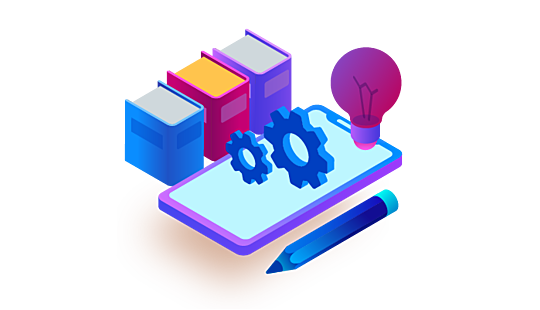-
Product Management
Software Testing
Technology Consulting
-
Multi-Vendor Marketplace
Online StoreCreate an online store with unique design and features at minimal cost using our MarketAge solutionCustom MarketplaceGet a unique, scalable, and cost-effective online marketplace with minimum time to marketTelemedicine SoftwareGet a cost-efficient, HIPAA-compliant telemedicine solution tailored to your facility's requirementsChat AppGet a customizable chat solution to connect users across multiple apps and platformsCustom Booking SystemImprove your business operations and expand to new markets with our appointment booking solutionVideo ConferencingAdjust our video conferencing solution for your business needsFor EnterpriseScale, automate, and improve business processes in your enterprise with our custom software solutionsFor StartupsTurn your startup ideas into viable, value-driven, and commercially successful software solutions -
-
- Case Studies
- Blog
Top 7 QA Best Practices to Make Software Testing More Efficient
Software testing plays a critical role in the software development lifecycle (SDLC) as it helps to ensure that the quality of a software product is high enough to meet end users’ requirements and your business needs. How can you make sure the software testing process is as efficient as possible? Go on reading to discover the best QA methodologies and practices that can help you get the most out of the testing process.
QA best practices
Below, we list the most efficient software QA practices you should follow to facilitate your product quality assurance check.

Let’s find out what software QA best practices mean and what benefits you and your QA team can get by following them.
#1 Set testing goals and requirements
At the start of a software testing project, QA engineers should elicit the client’s expectations and testing requirements. This involves clarifying the following:
The client’s expectations
Being aware of issues clients want to solve through testing and the criteria they use to assess the success of testing allows QA engineers to arrange the testing process in accordance with clients’ needs. Moreover, clarifying requirements helps testing specialists estimate the resources required for testing.
Testing priorities
At this point, QA engineers need to get a specification for product functionality and a feature list with prioritized features to be tested first. Also, QA engineers need to know who the primary users of the product are and how they’ll use it.
When investigating testing priorities, QA engineers inform clients of the types of testing that are usually applied to a particular type of product and why so clients can decide on the types of testing they want to apply to their own software project.
Reporting on results
The QA team needs to know what bugs to report, what information to include in reports, and what format to use for reports. Also, the client and QA team need to discuss the conditions and frequency of regression testing and retesting.
Communication
A client and a QA team need to establish a meeting schedule and communication channels. The client needs to specify who the QA team should contact in case they need to clarify something or ask for more information regarding the project. Also, the QA team needs to know if the client requires any non-standard reports such as test descriptions, test reports, or time reports.
Benefits for the QA team
One of the biggest advantages of setting testing goals and requirements is that the team can assess the scope of tasks to perform and plan the testing process accordingly.
Above all, eliciting testing expectations helps both the client and the QA team assess the ability to attain the client’s goals with the help of testing. Thus, the client shouldn’t have false expectations and is more likely to be pleased with the results at the end of the testing process. Understanding a client’s goals and requirements allows QA engineers to deliver results the client expects and will be satisfied with. This also helps the QA team build a good reputation.
Benefits for the client
A clear workflow for the QA team is beneficial for the client, as it helps them to be aware of the full scope of testing tasks, the estimated cost of services, and the timeline for all QA activities. When the due date for the testing process is clear, the client can plan the release date and build a marketing campaign.
When testing requirements are clarified, clients can have realistic expectations regarding the testing process. Thus, testing results are more likely to meet the client’s goals.
#2 Establish a clear workflow
A well-designed workflow is vital for a successful quality assurance check. Experienced teams carry out testing in several stages.
First of all, they create a test plan. A quality assurance team needs to create a plan that will guide the testing process throughout development. In this plan, the team should specify the scope of tasks for the project, the deadline for completing the testing process, and the price of services.
The next step is to investigate all project requirements to check if they meet quality criteria and correspond to the product’s business needs. To do this, testing engineers gather information on the domain of the tested software. This allows them to understand specific requirements the software product needs to meet.
After that, the QA team moves to functional testing. During this stage, quality assurance engineers test your product feature by feature to ensure that all functionality works as it’s supposed to and according to specifications.
To ensure product stability, testing engineers run automated test cases after product updates or new features are implemented. This process is called regression testing. QA specialists use regression testing to evaluate the impact of updates on existing functionality and make sure that new builds don’t cause new bugs or system crashes.
Another vital aspect of an efficient workflow is test reporting. A QA team should provide test reports that include a summary of testing activities and final testing results after each testing iteration. Regular test reporting aims to inform stakeholders of the current product quality, make them aware of testing progress, and provide them with greater control over the quality assurance process.
Apart from having an established flow of tasks, a QA team needs to set a precise distribution of roles and responsibilities. One of the most useful tools to distribute tasks efficiently between team members is a RACI matrix. A RACI matrix assigns responsibilities for completing tasks and checking others’ deliverables. It also indicates who needs to be consulted or informed about project-related matters.
Benefits for the QA team
A well-developed workflow helps QA engineers know their responsibilities and boosts the efficiency of the testing process.
By setting a specific workflow with an established scope for all testing tasks, QA teams can reduce rework and delays that are common issues in both testing and development.
Benefits for the client
A clear workflow for the QA team is beneficial for the client, as it helps them to be aware of the full scope of testing tasks, the estimated cost of services, and the timeline for all QA activities. A clear workflow and regular reporting allows clients to establish transparent cooperation with a QA team and makes the testing process even more productive.
Moreover, a streamlined workflow helps testing engineers cut down on the time required for testing which, in turn, reduces the time to market and saves money.
#3 Check compliance with industry standards
Different industries and jurisdictions have their own regulations and standards that businesses should follow to secure their customers’ personal information. For instance, the General Data Protection Regulation (GDPR) aims to secure the personal information of EU residents, the Health Insurance Portability and Accountability Act (HIPAA) protects patients’ health information in the US, and the Payment Card Industry Data Security Standard (PCI DSS) protects customers’ payment card information globally. QA teams have to provide compliance testing services to ensure that a product meets any and all requirements.
Benefits for the QA team
Performing compliance testing makes a QA team in-demand. Compliance testing requires skills and knowledge that not every QA specialist has. Thus, if a QA team has the skills to perform compliance testing, they’ll be attractive to clients.
Benefits for the client
Laws and regulations are too expensive to neglect. In the first quarter of 2020, European supervisory authorities issued over 68 administrative fines for neglecting GDPR totaling approximately €50 million. Compliance testing helps business owners make sure their software products comply with the requirements of particular domains and avoid enormous fines.
A compliance check helps to ensure that end users’ personal information is safe and sound and that a security breach is unlikely.
#4 Combine automated and manual testing
Each manual and automated testing approach has its own benefits and nuances. Manual testing requires test engineers to run test cases manually to identify deviations from the expected behavior of the tested software and report them to developers.
When using the automated testing approach, tests are performed automatically with the help of scripts and automation testing tools.
The key to efficient software testing is combining manual and automated approaches rather than choosing one or the other.
Benefits for the QA team
Using both automated and manual testing speeds up the testing process and improves product quality.
Another advantage is that combining these approaches creates a team with a wide range of skills and competencies.
Benefits for the client
Manual and automated testing allow for checking different areas and functionalities of a software product. Applying both of these approaches increases test coverage, which is one of the metrics used to evaluate the success of the testing process. A successful quality assurance check should have between 80% and 100% test coverage.
Automated testing involves creating autotests that can be reused in the future. This facilitates code modification and support.
#5 Implement risk-based testing
Risk-based testing is an approach that aims at identifying the most harmful risks during the testing process. This approach involves assessing project risks, prioritizing them, and planning the testing process according to the priority of these risks. This allows QA engineers to concentrate on the most critical risks that may harm the product’s overall performance.
Benefits for the QA team
Implementing a risk-based testing approach at the early stages of software development helps to simplify the code architecture and, therefore, makes the product easier to test.
When applying a risk-based approach, testing engineers concentrate on the issues most likely to appear during product use. Thus, it helps to reduce the range of testing activities.
Benefits for the client
When following a risk-based testing approach, a QA team tests those pieces of functionality that are more prone to bugs. Thus, you can get a high-quality product even if you don’t have the resources to check all product functionality.
#6 Perform frequent regression testing
Another good quality assurance practice is conducting regression testing after updating a software product. When performing regression testing, QA engineers run a selection of tests that have been used earlier in the SDLC to check if the product works as it should. Regression testing allows testing engineers to ensure that updates or new features don’t affect the core of the software product.
Benefits for the QA team
Regression testing entails creating detailed documentation for running autotests. This documentation includes system specifications, test designs, bug reports, operator results, and other software-related information. This information can be used not only by testing engineers but also by developers and stakeholders.
Another key benefit of frequent regression testing is that it allows testing engineers to make sure new product features don’t affect the stability of the core software in order to maintain product quality at a high level.
Benefits for the client
Updates may bring bugs to a software product. Regression testing helps QA engineers minimize the number of bugs in a product.
QA engineers use automated tests to speed up quality assurance checks and simplify the software update process.
#7 Use shift left testing
One of the most crucial quality assurance best practices is shift left testing. This approach entails starting the testing process early in the SDLC. This means the testing team is involved at earlier phases of development than in traditional methods like waterfall, when testing activities begin only after the development stage is over.
Identifying and eliminating bugs at the early stages of the SDLC is cheaper than at the final stages, when product development is almost complete. According to IBM, discovering bugs after release may be up to 30 times more expensive than discovering them in the design phase.
Benefits for the QA team
This approach relies on closer cooperation between the QA team and the team of developers, giving QA engineers the possibility to influence product development from the very start.
Moreover, this approach facilitates covering a product with tests at the initial stages of the development process, allowing testing engineers to identify bugs much earlier and improve the quality of the software.
Benefits for the client
When starting test activities as early as possible, you need to ensure close cooperation between your QA and development teams. Close and effective cooperation accelerates the development process, reduces time to market, and lowers development costs.
Why it’s important to hire a team that follows software QA best practices
Although software testing is complicated and resource-intensive, it’s necessary for high-quality product development. By choosing a team that follows software quality assurance best practices you can make the quality assurance process smooth, predictable, and controllable.
FAQ
-
- Set testing goals and requirements
- Establish a clear workflow
- Check compliance with industry standards
- Combine automated and manual testing
- Implement risk-based testing
- Conduct regression testing frequently
- Use shift left testing
-
For a QA team, conducting compliance testing means being attractive to clients and demonstrates that you have a skillful team of software engineers.
For a software product owner, checking a product for compliance means checking the security of users’ personal information and avoiding hefty fines for non-compliance.
-
Make sure your team of testing engineers fully understands your testing goals and ensure that they follow the most effective QA practices during the testing process.
If you’re searching for a team of QA specialists that follow the latest and most efficient approaches to software testing, contact RubyGarage and take advantage of their exceptional quality assurance services.










